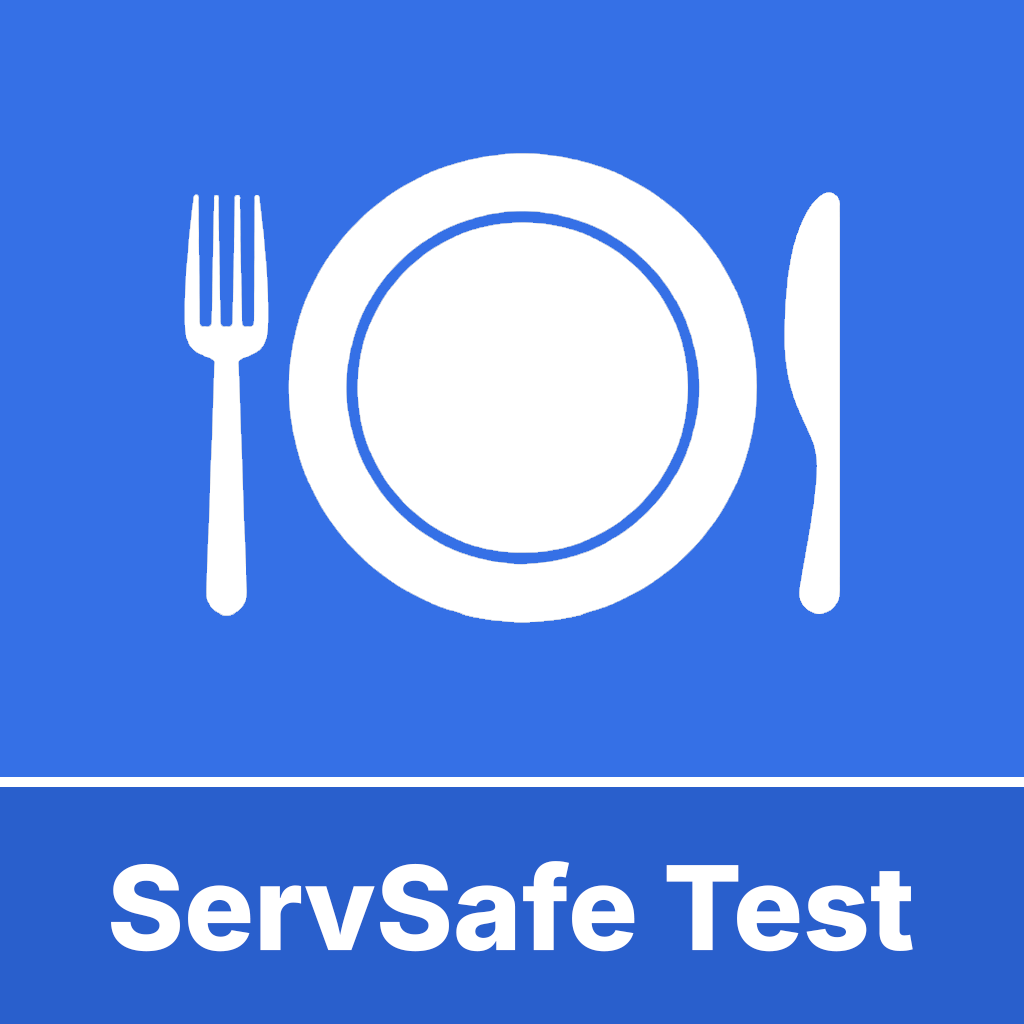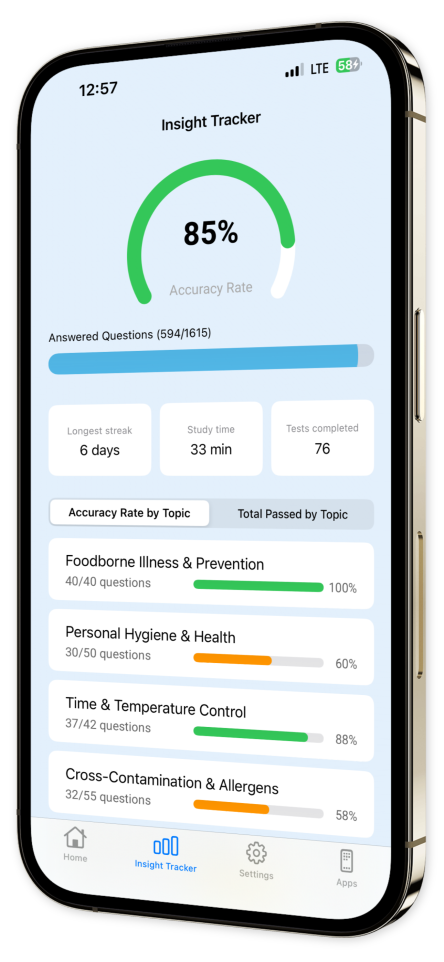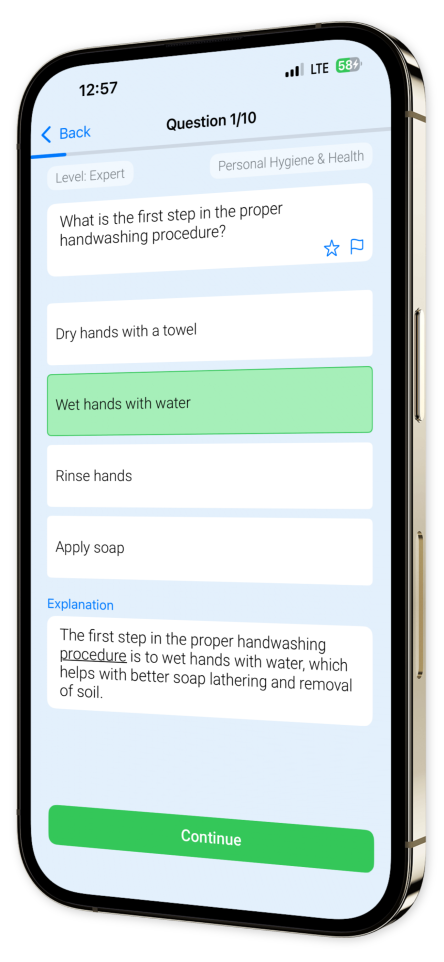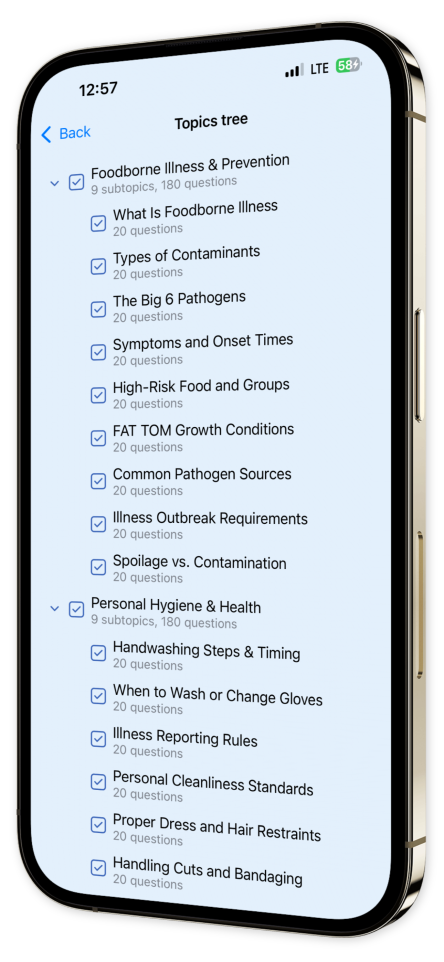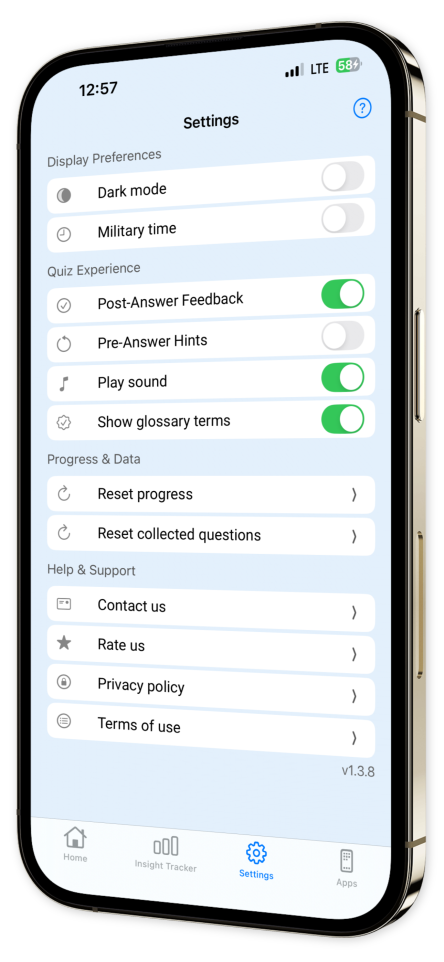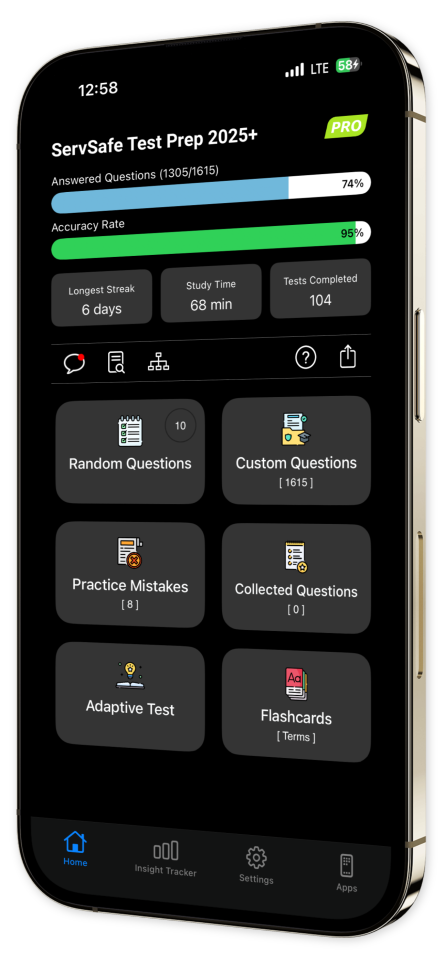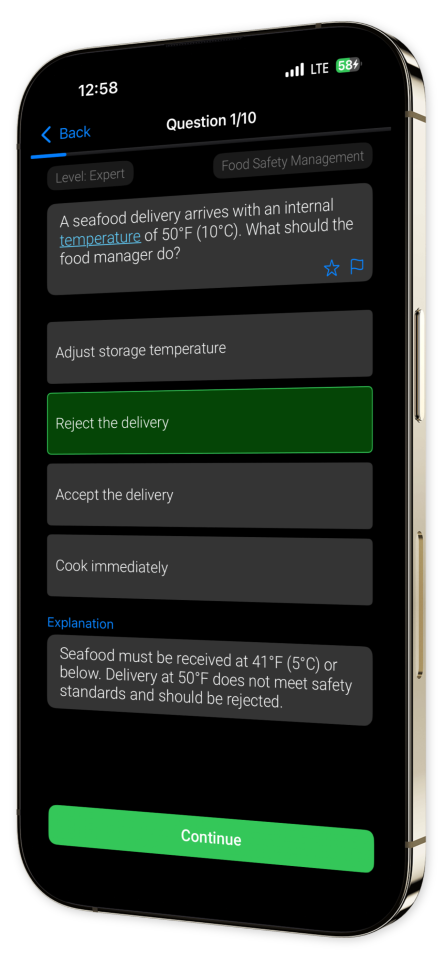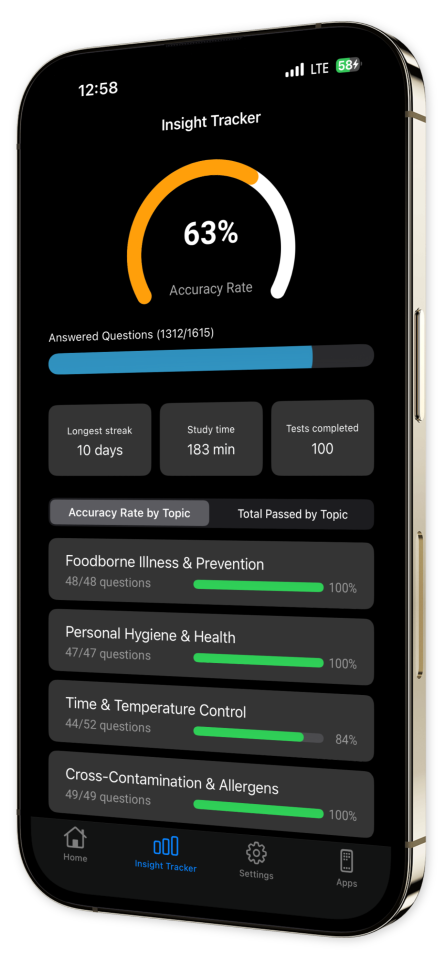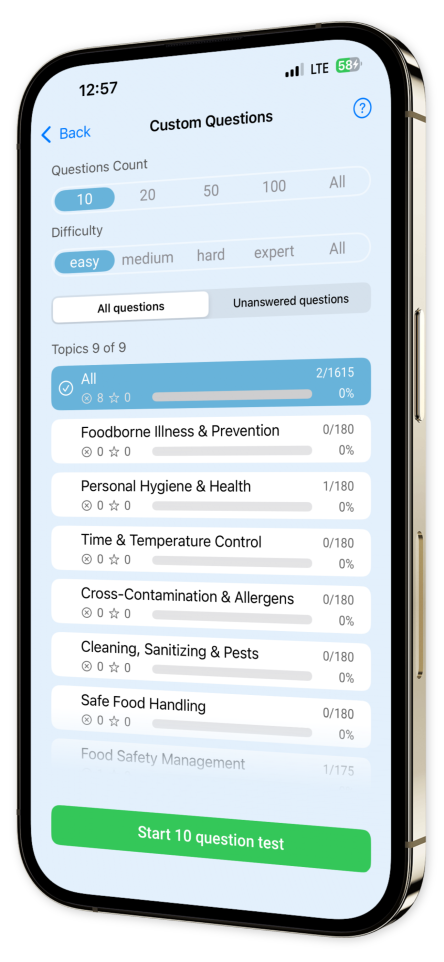
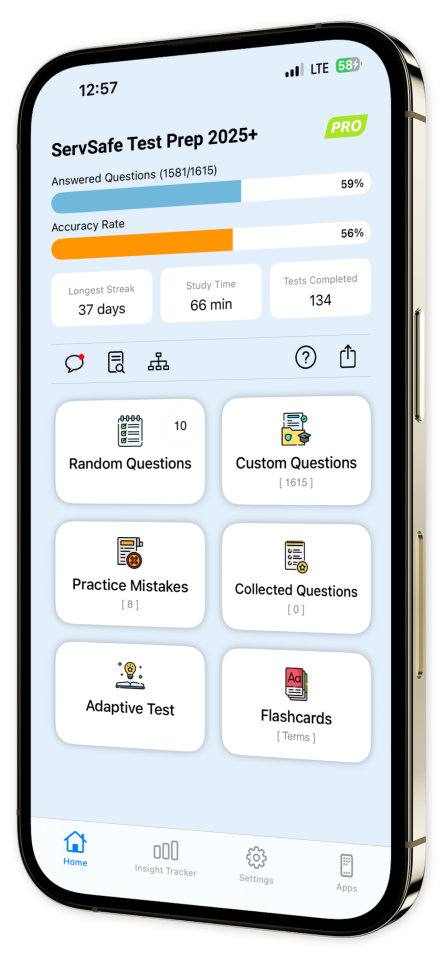
Serving Safe Test Prep 2025+ iOS
Prepare to excel in food safety certification with Serving Safe Test Prep 2025+! Our app immerses you in an engaging test environment, offering a diverse array of practice questions encompassing all vital aspects needed for food safety management. Each question comes with an in-depth explanation, enriching your comprehension and honing your skills.
Key Features:
Extensive Question Bank: Dive into a vast collection of practice questions covering crucial topics for thorough preparation.
In-Depth Explanations: Enhance your understanding with comprehensive rationales for each question, reinforcing learning and retention.
Customizable Quizzes: Tailor your study sessions by crafting quizzes with specific topics and question types, focusing on areas needing improvement.
Progress Tracking: Monitor your development over time with intuitive progress tracking, helping you measure your proficiency.
Offline Access: Gain the flexibility to study at any time and place, even without an internet connection, ideal for efficient learning on the go.
User-Friendly Interface: Experience a sleek and intuitive design that keeps your attention on mastering critical food safety concepts.
Download Serving Safe Test Prep 2025+ today and empower yourself with a smarter approach to food safety certification!
Prepare confidently.
Achieve success.
Ensure your comprehensive understanding in food safety.
Join thousands who have made Serving Safe Test Prep 2025+ their companion in mastering food safety standards!
Content Overview
Explore a variety of topics covered in the app.
Example questions
Let's look at some sample questions
What type of contaminant is Salmonella considered in food safety?
BiologicalPhysicalChemicalAllergenic
Salmonella is a type of bacteria, which classifies it as a biological contaminant.
What is the category of contaminant that includes bacteria like Campylobacter?
AllergenicChemicalBiologicalPhysical
Campylobacter is a bacterium, making it a biological contaminant in food safety.
Identify the type of contamination that occurs when a cutting board is used for both raw chicken and vegetables without proper sanitation.
BiologicalPhysicalChemicalCross-contact
Using the same cutting board for raw chicken and vegetables without sanitation leads to biological contamination due to the transfer of pathogens like Salmonella.
What is the most effective way to prevent the spread of Hepatitis A in food establishments?
Wearing glovesProper hand washingUsing hairnetsCleaning floors
Proper hand washing is essential to prevent the spread of Hepatitis A, a virus transmitted through the fecal-oral route.
Which of the Big 6 pathogens is most commonly associated with raw poultry and eggs?
Salmonella spp.NorovirusE. coliHepatitis A
Salmonella spp. is most commonly found in raw poultry and eggs.
During an outbreak, how long can norovirus survive on hard surfaces?
1 hour12 hours24 hoursSeveral weeks
Norovirus can survive on hard surfaces for several weeks, making it persistent in the environment.
Identify the correct incubation period for Hepatitis A.
12-48 hours4-6 days15-50 days2-4 weeks
Hepatitis A has an incubation period of 15-50 days, meaning symptoms can appear within this range after infection. Understanding this period is essential for timely intervention and control.
Salmonella is often associated with which food source?
ShellfishGround beefPoultry and eggsLeafy greens
Salmonella is commonly associated with poultry and eggs. These foods must be cooked to appropriate temperatures to mitigate the risk of infection. Proper handling and storage are also important.
What is the onset time for foodborne illness caused by Staphylococcus aureus?
1-6 hours24-48 hours3-5 days1 week
Symptoms from Staphylococcus aureus can appear rapidly, usually 1 to 6 hours after ingestion.
What is the typical onset time for symptoms of Clostridium perfringens intoxication?
2 to 4 hours8 to 16 hours48 to 72 hours1 to 2 weeks
Symptoms of Clostridium perfringens typically appear 8 to 16 hours after exposure.
